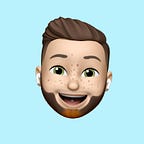Creating the right prototype: Part two.
In this two part series, I will guide you through the steps to creating not just the right prototype, but a great product.
This is part Two in a three part series, you can read part one here.
What is prototyping about?
There is often a big misconception that prototypes are finished products. But this is not the case, we believe in the power of tangibility. Prototypes are tools to learn and advance ideas, they reveal so much that mere theory cannot.
“Don’t think of it as failure, think of it as designing experiments through which you’re going to learn” — Tim Brown, CEO, IDEO
When prototyping, we fail early and often. We can spend a surprising amount of time not knowing the answer and this often uncomfortable. But we still forge ahead.
During this process we can demonstrate ideas by simply putting something tangible in the hands of those humans we are designing for (as well as stakeholders).
In the first post we look at talking to humans. So now it’s time to set the stage for our prototype.
Set the stage
Like all prototypes, the idea here is to make something really rough as a way to help you think the idea through. It’s amazing what putting pen to paper can reveal. But what shape can this process take?
Storyboarding is a great way to both map out the user journey and lay the groundwork for your prototype. By doing this we are able to expose and begin to understand how we can turn pain points in the current journey into trigger points that lead to behaviour change.
Storyboards are the best way to reveal these pain points. They essentially become a quick, low-resolution prototype by helping to visualise your concept from start to finish.
When working with our partners here at Etch, we have found that by visually plotting out elements of a product or service, we have been able to learn a lot about the idea and ensure everyone is on the same page. Sometimes it is difficult just talking about it because people are building their own mental models of what is being discussed. If you have a reference point, everyone comes together.
Not only will this method help you refine what your idea is, it can also help you understand who will use it, where, and how.
You don’t need to be an artist to sketch for an effective outcome.
The beauty of sketching and storyboarding is that you can get the idea down pretty much as soon as it hits you without worrying about it vanishing. Even if you have to lean awkwardly to scribble something while standing up on a train, it’s a great start.
Even though some people are naturally more visual and will express themselves easily through pictures, everyone can benefit from thinking visually. Getting visual makes ideas more tangible, and helps clarify your thoughts for your team. Even a super low-resolution drawing of an idea will help others understand and build upon it.
But how do I get started?
It’s all well and good me talking about sketching and storyboarding, but how do you actually do it? How do you get started? Here are a couple of steps that will help you start putting pencil to paper and taking another step towards your teams prototype;
- Determine what part of your idea you want to storyboard. You don’t have to Storyboard the entire thing, and you may find it useful to test a component of your idea like an interaction, or how a customer finds out about your product. User journey mapping is great for this.
- Spend no more than 30–45 minutes drawing how your ideas work. We tend to use post it notes as frames in the storyboard. This will help you spotlight key moments and build a short narrative. You should try crazy 8's!
- Don’t get hung up on your drawing abilities. It’s more important that a Storyboard helps you fully think through your concept than create something that looks beautiful.
- Play it back. Once you’re done, act out the Storyboard to your team for feedback.
Matt’s focus here at Etch is designing for humans, not users. Working with ambitious clients to create experiences, both online and off, that consider how we really interact with the world around us.
